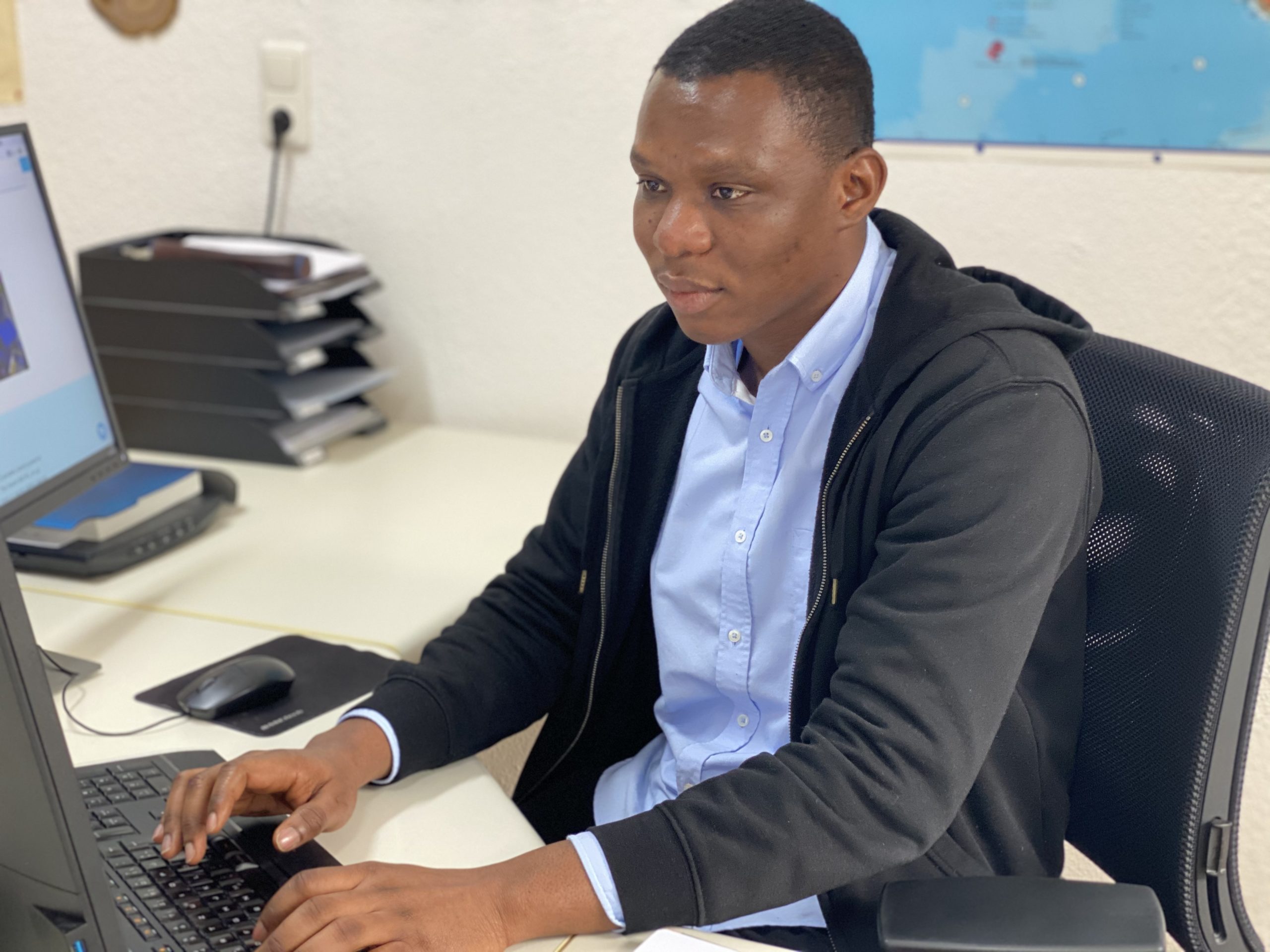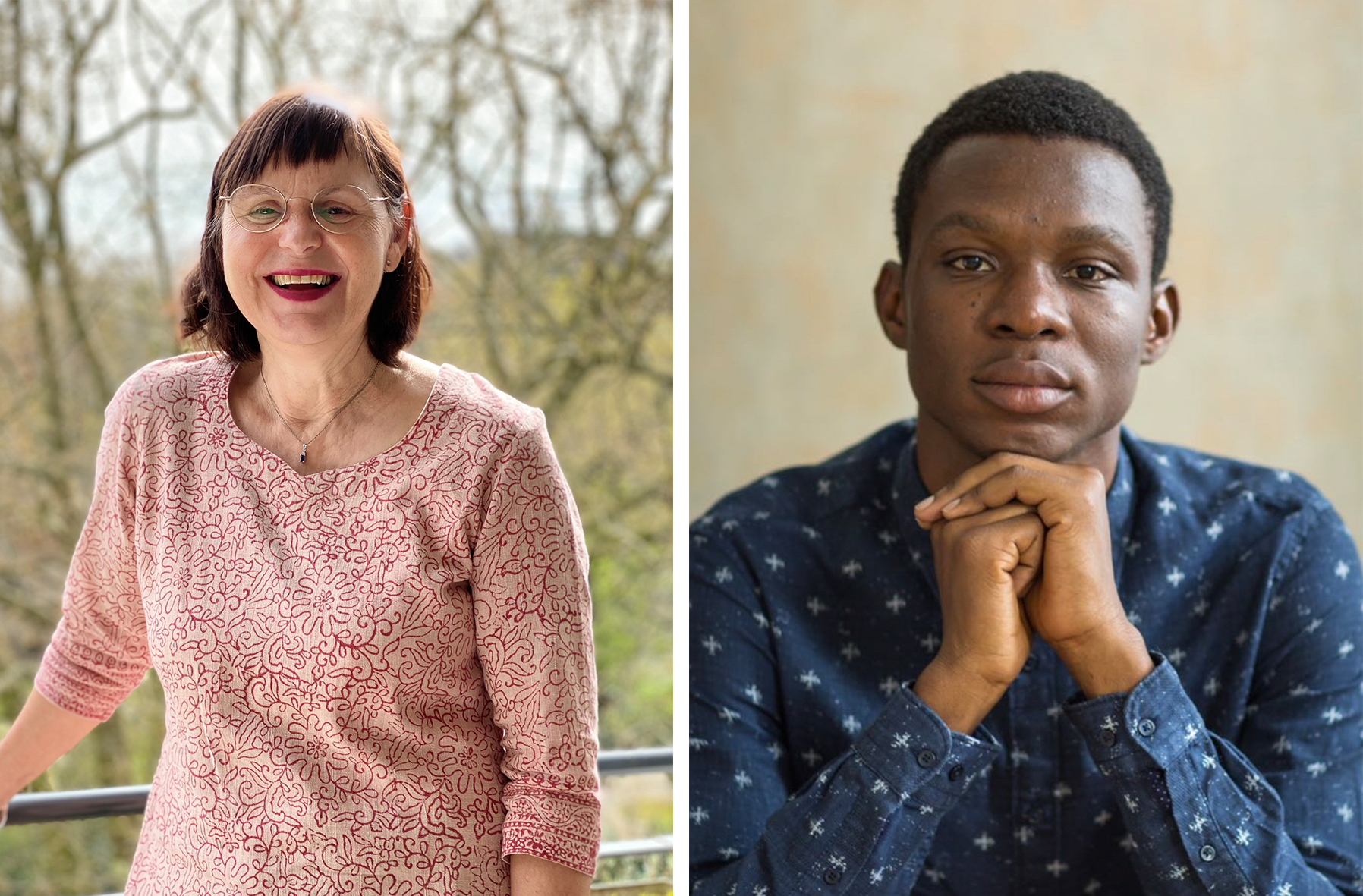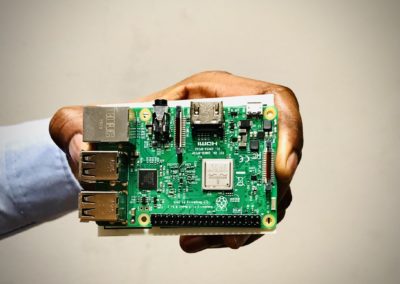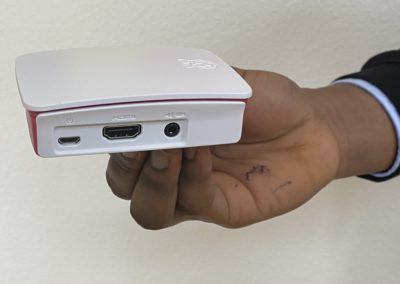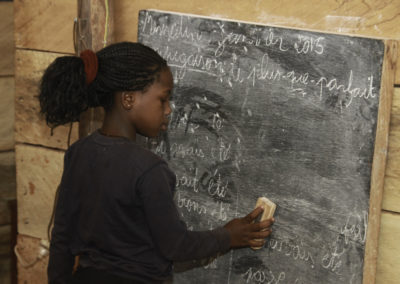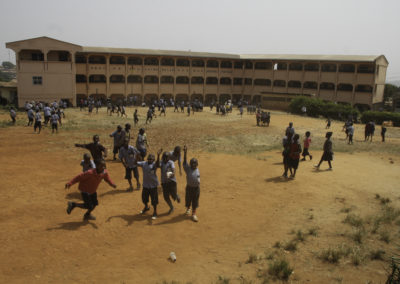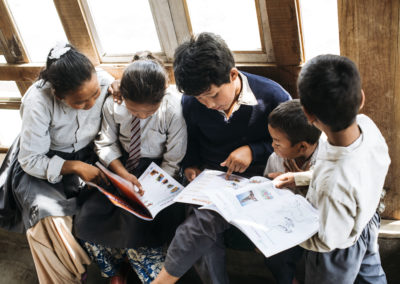The PATRIZIA Foundation is putting emergency funds from the Corona Fund Education Healthcare towards the development of digital learning infrastructures. To do this, it has joined forces with Beatrice Rutishauser Ramm and Otto Dodoo to develop an adaptable digital classroom concept, which will initially be trialled in three pilot countries.
Hello Beatrice. Your work in areas in crisis such as Kosovo, the Palestinian territories, Bangladesh and Cambodia has given you front-line exposure to the impact a crisis can have on children’s education. We’re now seeing such a crisis happening worldwide with the coronavirus pandemic. What impact is this crisis having on children?
Beatrice: Many children were already in crisis, even before the coronavirus pandemic, due to chronic poverty. But they still saw their lives as ‘normal’ – despite the high level of uncertainty. They knew what they had to do, they knew how to help their parents earn a living, they did their homework, and they looked after brothers and sisters. They felt self-reliant because a regular routine had set in, despite the crisis. Then the coronavirus crisis came and shook up the regular routine, which was already fragile. Suddenly, rather than the invisible coronavirus the bigger problem became hunger. Children had to learn from scratch again and work out how to deal with the new uncertainty. On top of that, school was gone.
The Essence of Learning (EoL) model you have developed will also be incorporated into digital classroom concepts. How exactly will that work?
Beatrice:Children often fall behind in developmental terms and have learning difficulties during crisis situations. Many children feel overwhelmed by school. It was found that concentrating on working with the Essence of Learning method not only lightens the load on teaching personnel, but importantly it also makes learning easier for children. This was also because children acquired learning strategies that they can use on their own. Children who have been on an EoL programme have their own emergency learning box. For example, in the box there are 100 PET lids, which the children can use to do wonderful calculations, or there’s a notebook with their own essays and reading sheets, which they add their own pictures to. Lots of children have started using and expanded their emergency learning boxes during the pandemic. For digital learning to bear fruit, it will be important for children to be equipped with the right learning strategies. This is where the EoL method can help, so they can go back through digital material using analogue methods.
What sort of challenges do you face when you develop this kind of concept for digital classrooms?
Beatrice:A lot of schools have infrastructure problems, not unlike those faced by families in the surrounding area. There are interruptions in the electricity supply, they don’t have internet, and they’re short of money. A lot of teachers didn’t have training that would allow them to try out different learning methods in a practical setting, such as teaching in groups or handing over the responsibility of learning to children. You have to take on both of these challenges to strengthen the quality of learning in general. This is also why digital methods are made available in different stages, because this makes it easier for schools to integrate changes.
“A lot of schools have infrastructure problems, not unlike those faced by families in the surrounding area. There are interruptions in the electricity supply, they don’t have internet, and they’re short of money.”
What sort of factors do you need to take into account when you do this?
Otto:We need to find realistic digital solutions so that children living in poverty-stricken areas can use the digital skills they have acquired in their everyday lives. There are two key aspects we would like to focus on. First, depending on the situation faced by schools, we will work with partners in identifying end devices that can be expanded during the process. The sort of factors we considered include infrastructure, electricity supplies, internet access, energy required for maintenance purposes, computer programs, platforms, as well as the end devices needed for a digital classroom. Second, we considered
reinforcing training given to teachers and parents. For this to be achieved, teachers and parents will be trained on different methods and teaching skills that will make digital learning an integrated part of the school curriculum and not perceived just as an add-on. This is important because digital learning can be used to expand and deepen knowledge. It will also allow us to start with adult education while we get to know the school a bit better and work with staff on coming up with a sustainable digital solution.
What sort of things do you need to think about when you’re introducing an adaptive digital classroom (ADC)?
organisations, one that’s implementable and has the backing of the
headteachers, teaching staff and parents. This is why we want the implementation to span across three phases – a preliminary phase, which is mainly about explaining how things work and educating people; an implementation phase, which involves making a number of changes to school procedures; and finally, a monitoring and evaluation phase, in which we will work together with the partner organisation on any difficulties that might arise. After that, there’s fine-tuning. Once all of these phases have been completed, the school can move on to the next phase, which is roll-out. Obviously, the implementation of the ADC will not be done in a hasty manner but that allows things to move forward organically and also ensures a certain degree of digital literacy to develop, not just within the administration at the school but also in terms of designing lessons.Otto: It’s important to develop a step-by-step plan together with the partner
As well as ADCs, you’re also working on emergency ADC solutions (E-ADCs). Why are they needed, and how do they work?
Otto: The feedback we received from the three pilot schools was that they all had problems with reliable power supplies and internet access. Also, overall, there’s inadequate teaching materials and insufficient funds to sustain the digital classrooms in the long term. Given these problems, we developed an interim E-ADC solution that will still allow students to learn digital skills. The E-ADC plan is underpinned by a little “magic box” – otherwise known as Raspberry Pi. This is a low-cost, credit card-sized computer that can be plugged into a monitor or TV and can be used with a standard keyboard and mouse. This little “magic box” can be supplemented with any second-hand computer components that are still usable locally. We’ll also be using the Raspberry Pi technology as part of the E-ADC initiative to build an offline education server. This will make it possible to provide poverty-stricken schools with digital teaching content, even if they don’t have internet access.
“It shows that you mustn’t forget analogue measures and learning competence. Even if you’re using digital learning, children still have to process every nugget of knowledge.”
And what advantages does this provisional solution offer, especially from a teaching perspective?
Otto: The E-ADC solution will help older pupils learn programming, build fanciful robots and come up with all kinds of wacky and wonderful projects. At the same time, it will help the partner schools to build their personal offline education server to access open-source teaching materials that will help promote learning in ways that are open, flexible, intuitive and beneficial.
Beatrice:What this shows is that you mustn’t forget analogue measures and learning competence. Even if you’re using digital learning, children still have to process every nugget of knowledge. So, for example it’s important to adapt digital learning to cognitive skills. Ultimately, even kindergarten children build ‘robots’ when they’re playing with their toys, so they’re developing practical skills, and these can be built on in digital terms by using digital toolkits.
The idea is to implement this concept at three PATRIZIA Foundation schools – in Cameroon, Nepal and Rwanda. Why have these pilot countries been chosen, and what differences or challenges do they present on a local level?
Beatrice: PATRIZIA School Yaoundé in Cameroon is a combined primary and secondary school with 600 children. For each class there’s one teacher with 50 to 60 pupils. According to the head, the teachers have had insufficient training and have little experience with computers themselves. The school would like to become a model school for Cameroon that offers its students modern learning opportunities.
Otto:The PATRIZIA Vocational Training Center Ntarama in Rwanda is currently attended by 225 young people. It also has infrastructure issues, and unending budget problems which don’t allow for extra costs for internet access. Also, due to the level of maturity of the students, they have to be protected and educated on the dangers associated and posed by the internet. This highlights another concern, which is about protecting children and young people on the internet, and this is something we’re also discussing with partners.
Beatrice:The third school is in Nepal: the PATRIZIA School Dhoksan is high up in a mountain village and was left badly bruised by the earthquake. The PATRIZIA Foundation already helped with reconstruction work in 2019 and has added an extension to the school. The next task with our partner Supertecture will be to build an innovative, earthquake-proof digital classroom. We’ll work with the school to prepare for the digitalisation process even before building starts. This will become a beacon project – state-of-the-art media equipment in a remote mountain village, connecting the school community to the rest of the world.
What all three schools illustrate brilliantly is the different situation faced at each school. They highlight why it’s important to remain adaptable with the digital concept, which should focus on development for the child and a modern approach to teaching. This will allow us to fine-tune the concept after the first round of experience and pass on what we learn to other schools.
Beatrice Rutishauser Ramm
is a trained educationalist with a master’s degree in Global Education. After ten years of teaching in the classroom, she worked as an emergency educationalist for Caritas Switzerland for nearly twenty years. The international projects she has worked on were affected by both chronic and acute crises. In early 2020, she started working as an independent consultant on emergency education topics. As part of her work for Caritas Switzerland, she developed the Essence of Learning (EoL) method, an adaptable approach that supports children with their learning requirements in any kind of crisis. EoL is used in a variety of programmes aimed at different age groups, both inside and outside the school environment. In 2017, the EoL method was selected and funded by UNHCR for the Humanitarian Educational Accelerator (HEA) programme. Since September 2020, Rutishauser Ramm has been offering her expertise as an educationalist to the PATRIZIA Foundation. Her podcast series, We Are in This Together, was ranked in the Top 3 for the mEducation Alliance Awards 2021 in the category of Crisis and Conflict Response.
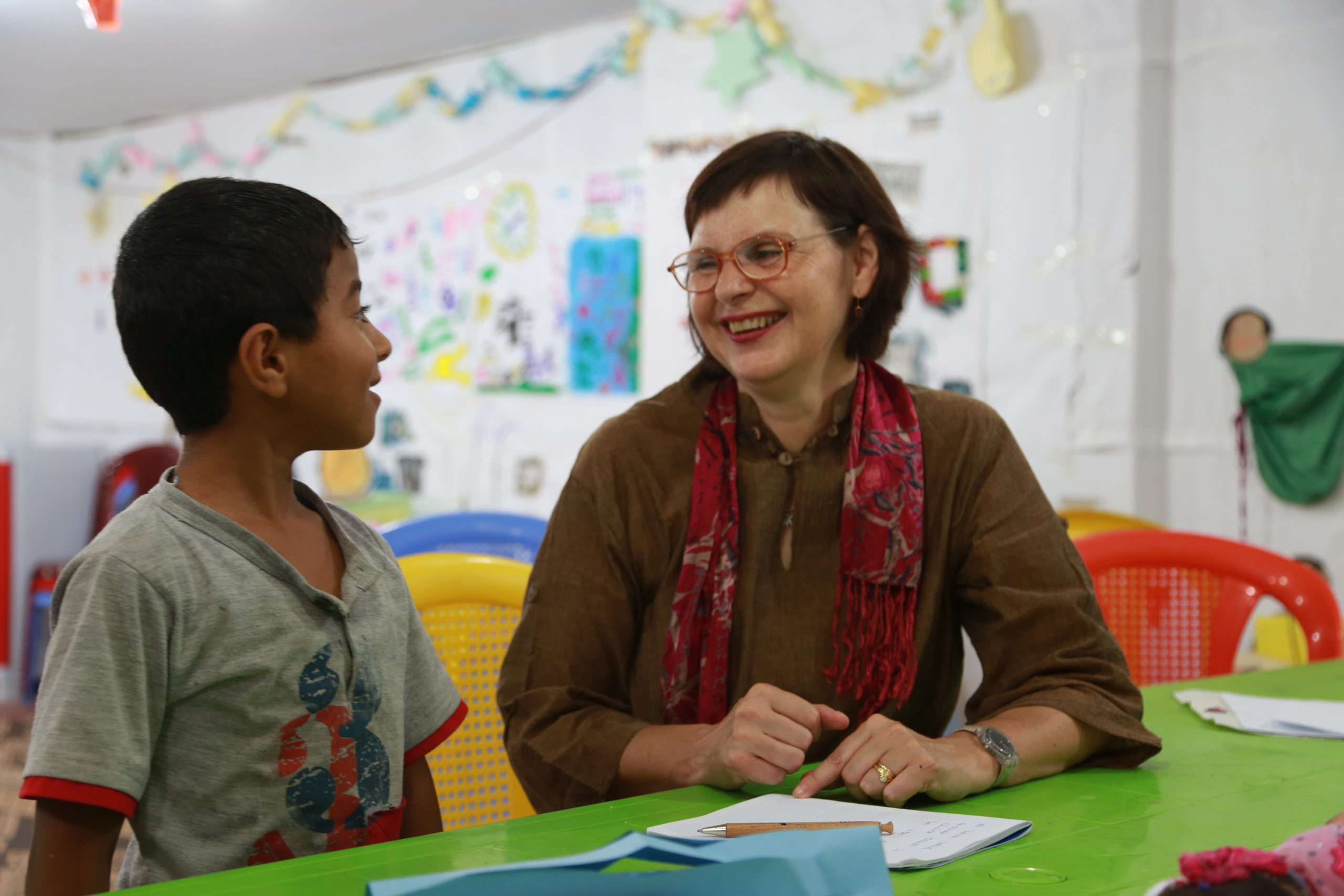
Rafak Nii Otto Dodoo
has been supporting the PATRIZIA Foundation as a consultant for the digital classroom project since November 2020. He studied International Affairs and Profit & Non-Profit Management at the Willy Brandt School of Public Policy at the University of Erfurt. After growing up in Ghana, his own life experiences have shown him that access to education can greatly improve many lives. Otto has initiated a number of projects aimed at fostering education in Africa. One among them was the Knowledge is Power project, which was honoured with the Commitment Award in 2019 by the Willy Brandt School. He also co-founded the Dodoo Coding Club to help children in his home village learn computer programming.
